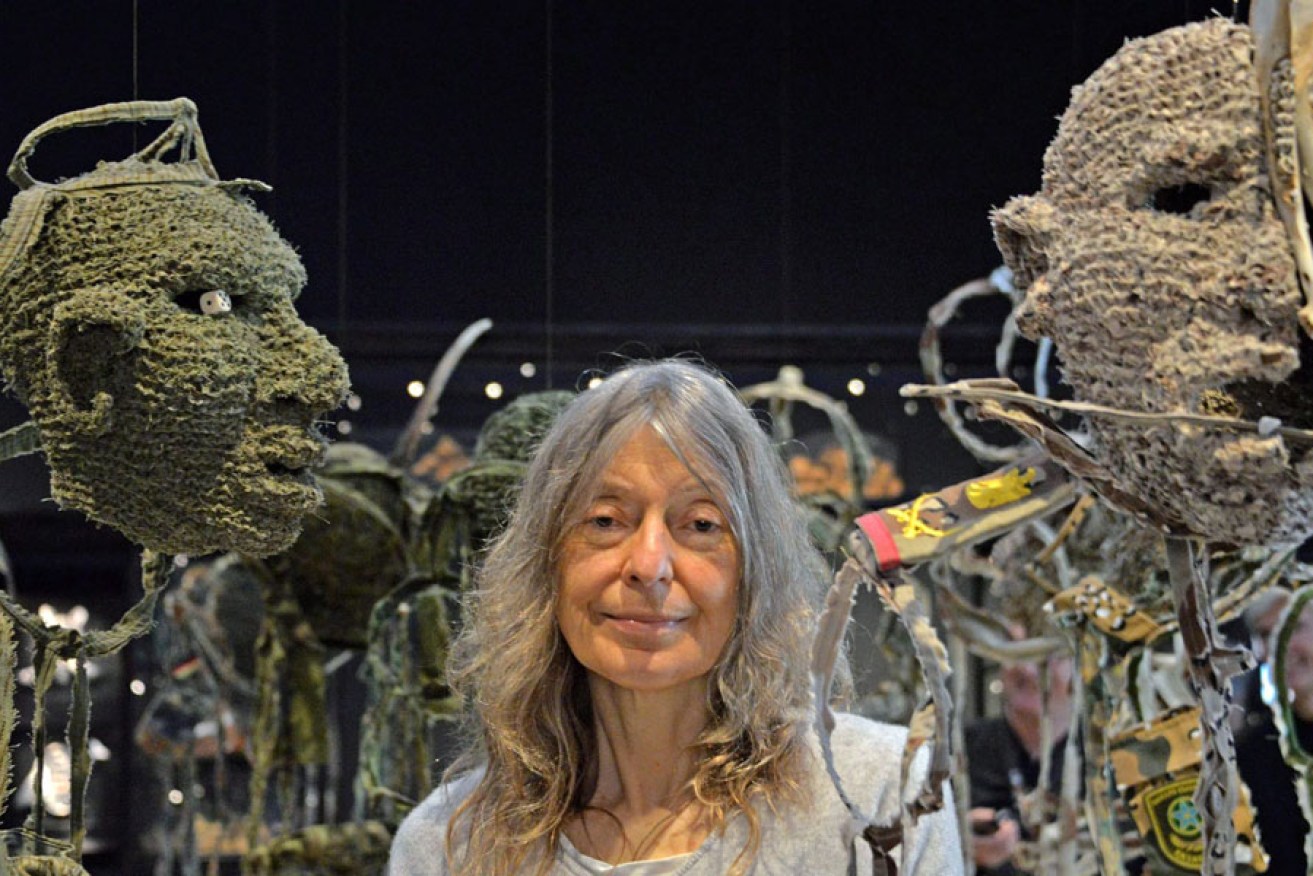SA at the Olympics of the art world

South Australian artist Fiona Hall poses next her artwork 'Wrong Way Time' at the Venice Biennale in May.
Often described as the Olympics of the art world, the Venice Biennale actually predates the first modern Olympics.
Established in 1895, the year prior to Athens’ first modern Olympics, the Venice Biennale had an even earlier precursor in an 1887 exhibition, whereby the city of Venice staged a major exhibition in order to thrust its historic self into the modern age.
The location chosen for the Venice Biennale was, and still is, Castello, the large district at the eastern end of Venice. If Venice were a fish, Castello would be its tail. The historic shipyard (Arsenale) and the public gardens (Giardini) are the Biennale’s key venues. This once neglected corner of the canal is now the epicentre of the global art world.
This strikes me as an early example of art-led renewal. This capacity for art to revitalise people and place is today seen and experienced the world over – in Bilbao in Spain, Northern France, Hobart, and is even discussed as a salve for Port Adelaide.
But what exactly is the Venice Biennale? Held every two years, it is a celebration of art from across the globe that includes curated exhibitions, dedicated national pavilions (more on that in a moment), and hundreds of other art-related exhibitions and events; the floating city is completely transformed by art.
The parallels with the Olympics include the inherent competition in pitting nation against nation, the selection of ‘elite’ artists to represent their countries, and even the presentation of a major award, the Golden Lion, for the most outstanding exhibition. Despite not being awarded the Golden Lion, the Australian Pavilion, whose key exhibition was that of South Australian artist Fiona Hall, has been consistently ranked as a “must-see” this year.
Hall chooses to live in Adelaide. Born in Sydney mid-last century, she has called Adelaide home since the early nineteen eighties (see my last opinion piece, Small big city perfect for artists). Most of her work is made in her Hackney home with materials sourced from Gepps Cross market and other treasure troves.
Wrong Way Time, the name given to her Venice exhibition and entire work of art, features clocks of all shapes and sizes. Hall transforms grandfather clocks and cuckoo clocks, many lovingly restored by a Magill Road clockmaker. More than timepieces, they herald our imminent demise and warn us against our abuses of nature.
Since the nineteen seventies Hall has hidden environmental and political warnings within her work, using technical virtuosity and an ingenuity that is second-to-none in this country (who would ever imagine that sardine tins could become jewel-like sculptures?). This ‘Trojan horsing’, whereby the beauty of the work conceals an underlying message, is Hall’s strength, and one that speaks across all languages, enthralling global audiences in Venice.
Hall has cleverly presented a survey of her own history by incorporating and acknowledging her early work, including her famed sardine-tin sculptures. Wrong Way Time sits as a delicious contradiction – it is somehow both a contemporary installation and a survey exhibition. Among its myriad parts are a series of suspended three dimensional heads knitted from military camouflage. Titled All the King’s Men, these forms gently query our Anzac delirium and ongoing appetite for war.
2015 is a significant Venice Biennale for Australia for another reason: Australia’s new pavilion, designed by architects Denton Corker Marshall, is the first twenty-first century pavilion to be built within the Biennale’s historic Giardini precinct. It may well be the only new national pavilion built this century, and is one of only 29 national pavilions in total, with strict heritage laws and a lack of space at the Giardini hampering other development.
The new pavilion, a stunningly elegant black box that cantilevers over the canal, has been financed to the tune of $6.5 million by private benefaction, and with an additional $1 million in government funding, through the now challenged Australian Council for the Arts. Adelaide families are among the 80 from across Australia who have privately supported the project.
This pavilion, and its celebrated South Australian artist, will attract approximately half a million visitors in coming months. Meanwhile, back in Adelaide, Fiona Hall prepares for her next project: a trip into the APY Lands to reconnect with the Tjanpi Desert Weavers (with whom she collaborated to make some of the elements in Wrong Way Time), for a project inspired by World War One trench art and developed by the Art Gallery of South Australia.
Far from the canals of Castello, Fiona Hall is an art-world Olympian and celebrated South Australian, awarded an Order of Australia medal in 2013. She knows, as do all athletes, that one’s personal best comes only with focus and fortitude.
Nick Mitzevich is director of the Art Gallery of South Australia. He is a regular contributor to InDaily.




